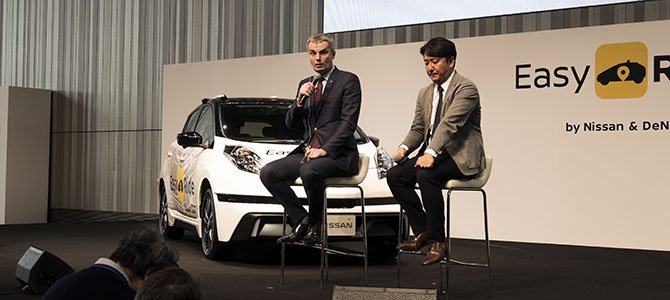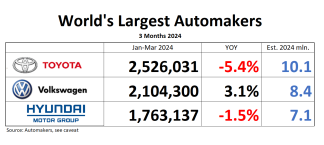When Uber came along, the attendant Silicon Valley bombast was that Transport As A Service will leave the auto industry in ruins. It overlooked the minor detail that someone must make the cars that supposedly would be shared. Silicon Valley also did not anticipate what came next: In a first wave, car companies, always in search of new ways to sell cars, bought into the alleged disruptors. GM invested in Lyft, Toyota in Uber. The money was welcome. So were the sold, and leased out cars.
Today, we saw the first ripples of the second wave. Automakers are beginning to compete head-on with the erstwhile disruptors. Today in Yokohama, Nissan started a pilot with self-driving Leaf cars used as autonomous taxis. Partnering with e-commerce company DeNA, Nissan will start its “Easy Ride” service in Yokohama on March 5th, which puts it, according to Reuters, “among the first major automakers anywhere to test ride-hailing software developed in-house, using its own fleet of self-driving electric cars.”
The test has simple beginnings. Cars will self-drive a 4.5 kilometer (2.8 miles) route down the main drag of Yokohama’s Minatomirai district, with the city’s scenic Red Brick Warehouse on one end, and Nissan’s HQ conveniently at the other. Devoid of the narrow alleys Japan is known for, it is a “relatively simple route,” admitted Hiroshi Nakajima, head of DeNA’s automotive business unit. Taking place from “March 5th to March 18th, involving 300 people of the general public,” as Nissan’s CEO Hiroto Saikawa said today, the test will be short, and limited in scope.
A full-fledged rollout of the service should be expected at some time after 2020, we were told. When exactly, remains firmly in the stars. What also is unclear is the business model. At events like these, there always is a lot of talk of new ecosystems, and today was no different. There were the requisite videos of the robotic taxi stopping at the cake shop on the ride home, and there was talk that the shop could pick up the fare if the robot delivers a paying customer. What remains anyone’s guess is whether Easy Ride will operate as a standalone product like Uber, or whether Nissan and DeNA will sell robotic taxis along with a nationwide infrastructure to local taxi operators.
“Easy Ride” sure looks like a standalone offering, but then there were repeated mentions today of how the service will be “complementary instead of competing with local service providers,” as Nakajima said. A representative of the local taxi association was an invited guest today. Taxi associations wield considerable power in Japan, and many other countries. Uber received numerous black eyes when ignoring their influence.
What Nissan definitely does not believe is that self-driving taxis will eat into its car sales. “Will it impact sales? The answer is no,” said Ogi Redzic, the man in charge of connected cars and mobility services at the Renault-Nissan-Mitsubishi Alliance. “It will be adding to our regular sales. We offer the service to elderly who will not be able to drive by themselves, we think we can pick up kids. The cars will go 300, 400 km a day, so this fleet will be renewed much more frequently.” Which is another point Silicon Valley’s disruption demagogues did forget.
The service will be driverless, but it wasn’t completely without human intervention at its inauguration today. Outside of Nissan’s HQ, a Nissan Leaf bereft of any humans rolled up to the throngs of media that came to the event. The car took on people, but then, a driver hopped in. As the Leaf joined Yokohama’s noontime traffic with its precious human cargo, the driver took his hands off the wheel. But the driver still was there, just in case.
“Well, one step after the other,” a Nissan manager mumbled to me after the event.







